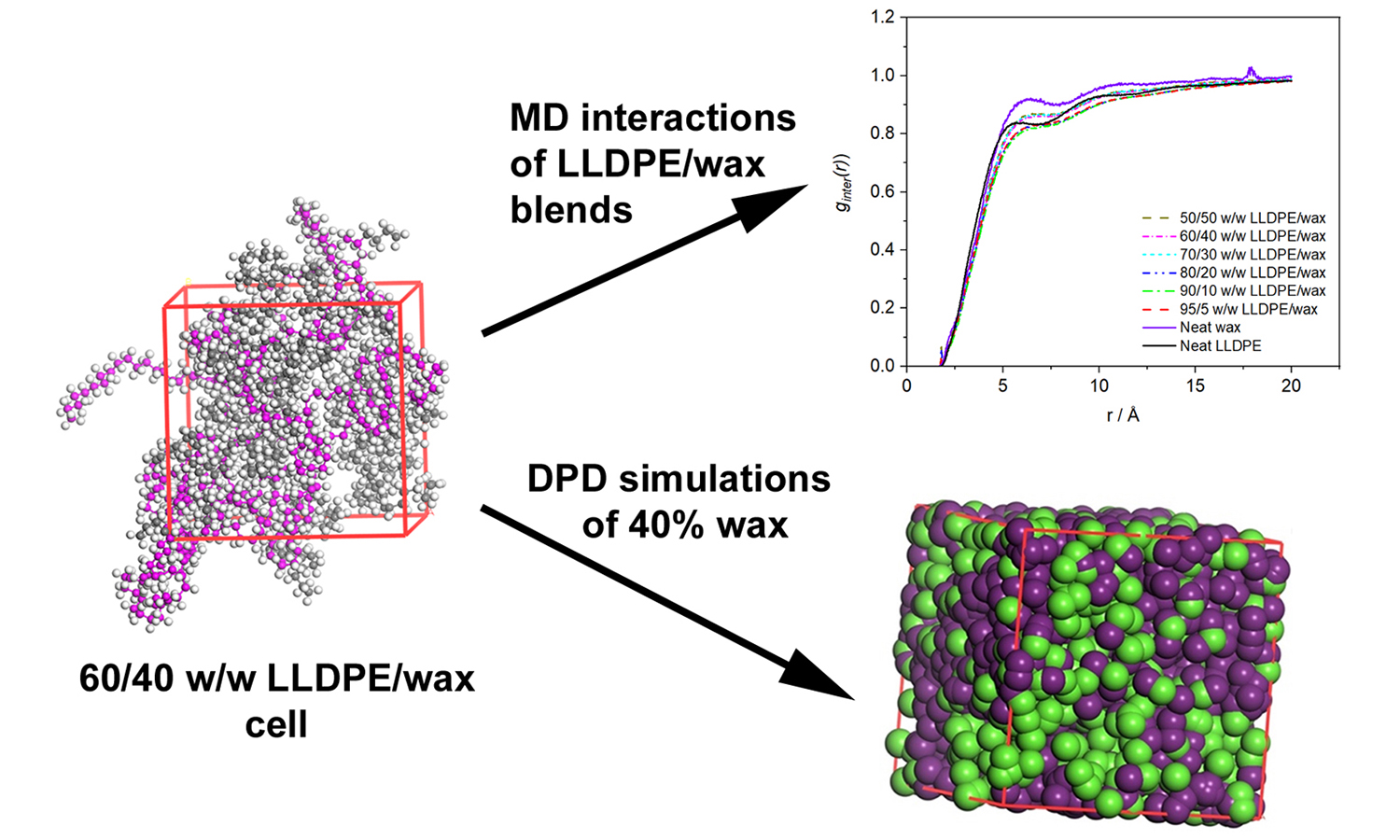Molecular dynamics on blend miscibility of LLDPE and soft wax: An atomistic simulation and thermodynamic approach
Mafereka Francis Tyson Mosoabisane, Cornelia Gertina Catharina Elizabeth Van Sittert, Adriaan Stephanus Luyt
Vol. 17., No.5., Pages 546-562, 2023
DOI: 10.3144/expresspolymlett.2023.40
DOI: 10.3144/expresspolymlett.2023.40
GRAPHICAL ABSTRACT

ABSTRACT
Atomistic molecular dynamics and dissipative particle dynamics simulations have been applied to study the miscibility of long- and short-chain linear low-density polyethylene (LLDPE)/wax blends. Molecular dynamics (MD) studies focused on selected mass ratios of LLDPE/wax blends to compare the simulations to published experimental results. The solubility parameters of the pure components and blends were computed to determine the Flory-Huggins interaction parameter (χAB) of the binary systems. Because the critical Flory-Huggins interaction parameter (χAB)critical was larger than χAB for all the mass ratios investigated, wax and LLDPE were expected to be completely miscible at all mass ratios. The results from the Flory-Huggins interaction parameter agree with the modelled glass transition temperature (Tg) values obtained for the blends. However, these results could not be used to explain the blends’ miscibility characteristics because the highly crystalline wax does not show a glass transition. The partial miscibility of the blends was, however, observable from the dissipative particle dynamics (DPD) simulation results. These results showed clumps of wax chains in the blend matrices. The simulation results further showed that the wax chains interacted more strongly with the short than with the long LLDPE chains, which was the final observation that supported the partial miscibility of the wax and LLDPE in the LLDPE/wax blends.



